Hands of Gemini 9
 Wednesday, June 4, 2008 at 07:38PM
Wednesday, June 4, 2008 at 07:38PM Johnny Depp 9 June 1963
Vincent Price 27 May 1911
 Johnny Depp,
Johnny Depp,  Vincent Price,
Vincent Price,  astrology,
astrology,  gemini,
gemini,  hands in
hands in  Gemini,
Gemini,  Hands of Gemini
Hands of Gemini  Print Article
Print Article  Wednesday, June 4, 2008 at 07:38PM
Wednesday, June 4, 2008 at 07:38PM Johnny Depp 9 June 1963
Vincent Price 27 May 1911
 Tuesday, July 22, 2008 at 12:30PM
Tuesday, July 22, 2008 at 12:30PM 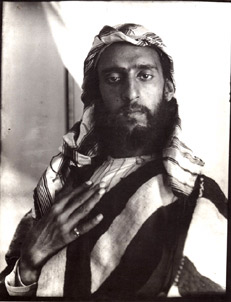
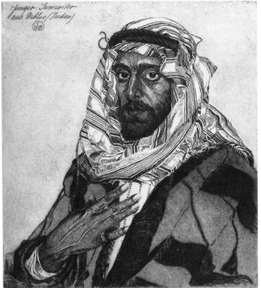

An interesting Gemini has turned up on my shelves, the photographer and artist E. M. Lilien (b. May 29, 1874). These two images comprise the front and back covers of The Art of Light, Photographic Aspects of E. M. Lilien, Jerusalem, 1992. The reciprocity between the two duplicative processes (photography and engraving), both practiced with great imagination and skill perfectly strikes the Geminian interval.
 Wednesday, June 3, 2009 at 03:25PM
Wednesday, June 3, 2009 at 03:25PM 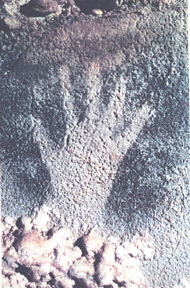
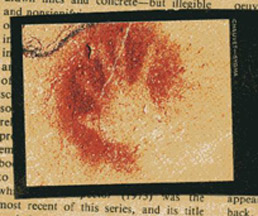
prehistoric cave art (photo:Chauvet-Signa)
cartoon by Saul Steinberg (b.June 15, 1914)
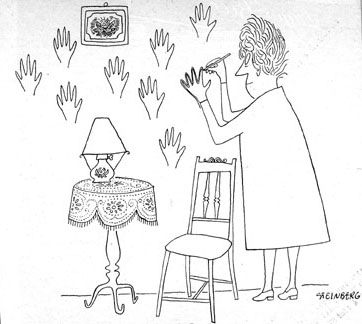
Photographer Dorothea Lange (b. 25 May 1895)
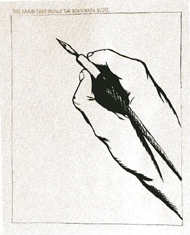
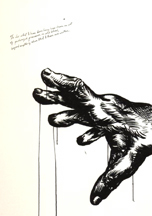
RAYMOND PETTIBON (b. 26 May 1957)
M. C. Escher (b. 17 June 1898)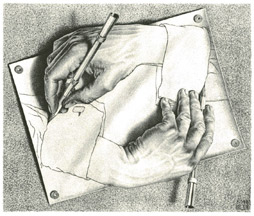
I sit at my desk and scribe the endless message from myself to my own hand. Allen Ginsberg, Planet News (b. June 3, 1926)
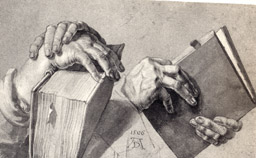
 Friday, June 12, 2009 at 07:17PM
Friday, June 12, 2009 at 07:17PM 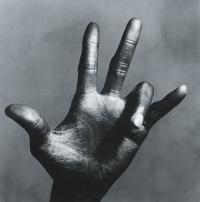
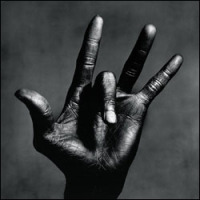
The hand is Gemini’s organ, which, it goes without saying, comes in pairs. Photography in its iterative, duplicative essence belongs to Gemini, and the hand is a perennial photographic subject. Gemini Irving Penn, the quintessential commercial photographer, was commissioned to shoot the elusive Gemini jazzman Miles Davis. Several remarkable hand studies resulted, where the hand is allowed to take over from the face the task of representing identity. Above, a pair of jagged hand portraits, sharp as portrait glossies, signaling difference digitally.
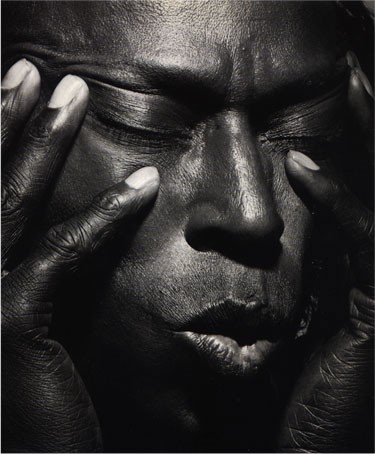
Here, the face is a mask, and the hands share the portrait.
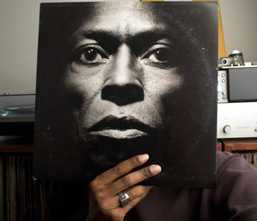 The photograph chosen for the actual album has been appropriated on FLICKr. The absent hand is restored.
The photograph chosen for the actual album has been appropriated on FLICKr. The absent hand is restored.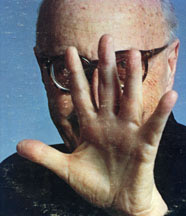 The punning album cover of Gemini conductor George Szell’s “Beethoven’s Fifth Symphony” repeats Gemini themes.
The punning album cover of Gemini conductor George Szell’s “Beethoven’s Fifth Symphony” repeats Gemini themes.
Gemini photographer Weegee took this one.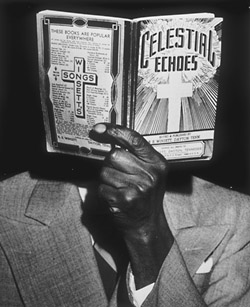
Another Irving Penn photo. Penn also shows the Gemini trait of having a notable sibling connection. His brother Arthur Penn also makes pictures.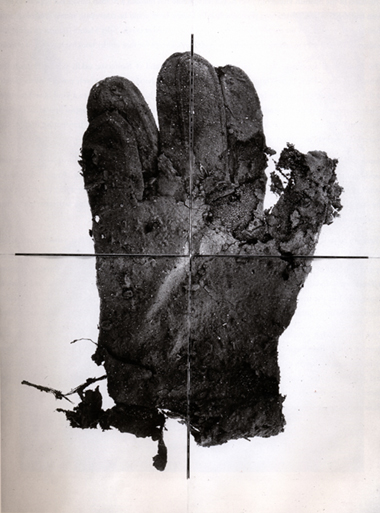
See also: Hands of Escher and Raymond Pettibon
and here for Hands of Johnny Depp and Vincent Price
 Tuesday, June 16, 2009 at 11:26AM
Tuesday, June 16, 2009 at 11:26AM 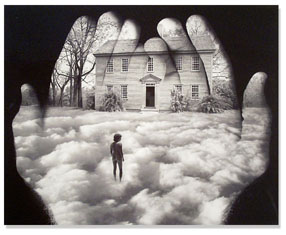 Gemini photographer Jerry Uelsmann (b. June 13, 1934) characteristically works with double exposures, multiple negatives and mirrorings, all Gemini themes . . and, of course, hands.
Gemini photographer Jerry Uelsmann (b. June 13, 1934) characteristically works with double exposures, multiple negatives and mirrorings, all Gemini themes . . and, of course, hands.
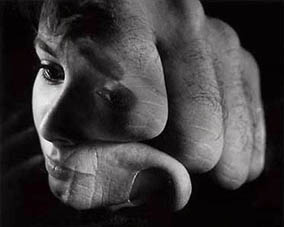
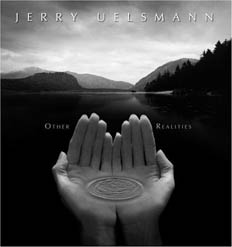
 Friday, June 19, 2009 at 03:49PM
Friday, June 19, 2009 at 03:49PM  A few Geminian images taken by Margaret Bourke-White, (b. June 14, 1904).
A few Geminian images taken by Margaret Bourke-White, (b. June 14, 1904).  “What is amazing about Margaret Bourke-White's life is the number of opportunities she managed to get for herself. In photojournalism, getting where the action is, being there when it happens, is a major part of the talent and, ultimately, the achievement. And Bourke-White managed to get herself where things were happening when they were happening by working hard at being lucky and by her piercing intelligence and intuition. She was able to sense the potential of a great story and to get the editors of Life to transport her to the hot spot on time.
“What is amazing about Margaret Bourke-White's life is the number of opportunities she managed to get for herself. In photojournalism, getting where the action is, being there when it happens, is a major part of the talent and, ultimately, the achievement. And Bourke-White managed to get herself where things were happening when they were happening by working hard at being lucky and by her piercing intelligence and intuition. She was able to sense the potential of a great story and to get the editors of Life to transport her to the hot spot on time. 
“An incredibly hard worker with legendary stamina and perseverance, she was also charismatic and, by all accounts, beautiful. Inevitably, people wanted to help her, giving her story leads and access. (And she apparently had a sixth sense about who would turn out to be useful to her.) Like most photographers, she had the ability to focus her personality on the getting of the photograph - by being persuasive, charming, persistent, manipulative, whatever it took. On top of all this, she had an exalted view of the role of the photographer as witness and felt that "getting there" and sending back the word was a privilege and duty. This messianic view of her job must have given her a lot of energy. (This wasn't as self-important an interpretation of the job of photojournalist as it might sound today: there was a world war raging, there was no television, no satellite transmissions to get the word out to the whole world within hours.) . . . . Elsa Dorfman Originally published in The Women's Review of Books, March 1997 Further regarding Bourke-White: her gender bending, cross dressing, siblings, two marriages, and innumerable images of multitudes, transportation, flight, communicating, paired, iterating, signaling, etc. Her single most famous image is probably the photograph of Fort Peck Dam, which appeared on the cover of the inaugural issue of LIFE Magazine. Henry Luce, the editor/publisher of LIFE, was a Taurus. That photograph seems to me another representation of the Taurus/Gemini confrontation, wherein the first issue of the first photojournalistic organ declares the imposing compatibility of the ephemeral photograph and the most massive material manifestation of capital, or the mass-ness of the new mass media.
Further regarding Bourke-White: her gender bending, cross dressing, siblings, two marriages, and innumerable images of multitudes, transportation, flight, communicating, paired, iterating, signaling, etc. Her single most famous image is probably the photograph of Fort Peck Dam, which appeared on the cover of the inaugural issue of LIFE Magazine. Henry Luce, the editor/publisher of LIFE, was a Taurus. That photograph seems to me another representation of the Taurus/Gemini confrontation, wherein the first issue of the first photojournalistic organ declares the imposing compatibility of the ephemeral photograph and the most massive material manifestation of capital, or the mass-ness of the new mass media.

 Saturday, June 20, 2009 at 09:54AM
Saturday, June 20, 2009 at 09:54AM 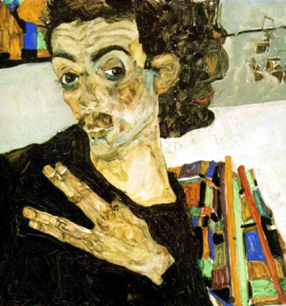 "For a well modelled thigh, you would recommend Michelangelo. For a radiant face, Rembrandt. But to whom would you turn for a supremely expressive hand? Egon Schiele, (b. 12 June 1890) the Austrian Expressionist who died at the age of 28 in the great flu pandemic of 1918, was a master of hands, and there is an enormous range of them throughout his work. There are long, thin, ivory-spindle-like hands which slide up the cheek; there are hands which drag at the flesh beneath the eye, making it bulge weirdly. There are hands which seem to snake around and almost to engulf the body, making it seem knotted and strangely tortured." (ref)
"For a well modelled thigh, you would recommend Michelangelo. For a radiant face, Rembrandt. But to whom would you turn for a supremely expressive hand? Egon Schiele, (b. 12 June 1890) the Austrian Expressionist who died at the age of 28 in the great flu pandemic of 1918, was a master of hands, and there is an enormous range of them throughout his work. There are long, thin, ivory-spindle-like hands which slide up the cheek; there are hands which drag at the flesh beneath the eye, making it bulge weirdly. There are hands which seem to snake around and almost to engulf the body, making it seem knotted and strangely tortured." (ref)
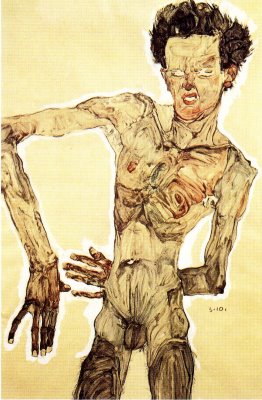
Anent Gemini's sibling associations: Schiele lived in a scandalous menage a trois with his wife and her sister, and he is believed to have had an incestuous relationship with his own sister.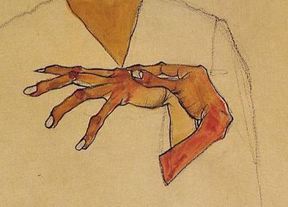

 Sunday, June 21, 2009 at 11:41AM
Sunday, June 21, 2009 at 11:41AM 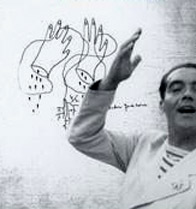 Spanish poet Federico Garcia Lorca (b. June 5, 1898), also an artist, drew this pair of severed hands, which chillingly prefigure his severed life: he was murdered by the Spanish fascists in 1936. Poets take note of the shout-outs among Geminis Whitman, Pessoa, Lorca and Ginsberg!
Spanish poet Federico Garcia Lorca (b. June 5, 1898), also an artist, drew this pair of severed hands, which chillingly prefigure his severed life: he was murdered by the Spanish fascists in 1936. Poets take note of the shout-outs among Geminis Whitman, Pessoa, Lorca and Ginsberg!
Incidentally, as a youngster, didn't Lorca look like Gemini Johnny Depp? I know "Separated at Birth" is an easy game, but when they're of the same sign I can't resist.
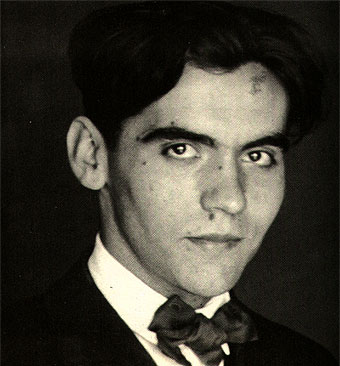
 Monday, June 22, 2009 at 05:10PM
Monday, June 22, 2009 at 05:10PM 
Leaving her handprints in front of Grauman's Chinese Theater, after the filming of Gentlemen Prefer Blonds, in which she figures as one of a pair (with Jane Russell), bon vivante and gender-bending. Granted, the hand is not the first body part one associates with Monroe, nor is Gemini the sign one might guess for her. Yet that might be the very disjunction that explains her anguish. She gave herself to the camera, that is, to the state of being duplicated and multiplied, promiscuously and compulsively. Hedda Hopper, herself a Gemini (and note that both ladies rechristened themselves with alliterative names, gracing their self-created identities with the primitive charm of doubleness), observed Monroe's relation to the camera:
for her. Yet that might be the very disjunction that explains her anguish. She gave herself to the camera, that is, to the state of being duplicated and multiplied, promiscuously and compulsively. Hedda Hopper, herself a Gemini (and note that both ladies rechristened themselves with alliterative names, gracing their self-created identities with the primitive charm of doubleness), observed Monroe's relation to the camera:
“No one in my memory hypnotized the camera as  she did. . . In her brain and body the distinction between woman and actress had edges sharp as razor blades. Off camera she was a nervous, amazingly fair-skinned creature almost beside herself with anxiety about her roles, driven to seek relief in vodka, champagne, sleeping pills—anything to blunt the pain of her existence. When the camera was there she became an actress, using her eyes, her hands, every muscle in her body to court and conquer the camera as though it were her lover, whom she dominated and was dominated by, adored and feared.” ---Hedda Hopper, The Truth and Nothing But (sic)
she did. . . In her brain and body the distinction between woman and actress had edges sharp as razor blades. Off camera she was a nervous, amazingly fair-skinned creature almost beside herself with anxiety about her roles, driven to seek relief in vodka, champagne, sleeping pills—anything to blunt the pain of her existence. When the camera was there she became an actress, using her eyes, her hands, every muscle in her body to court and conquer the camera as though it were her lover, whom she dominated and was dominated by, adored and feared.” ---Hedda Hopper, The Truth and Nothing But (sic)
 MM & HH: 2 Geminis and a mirror
MM & HH: 2 Geminis and a mirror
As a hypermediated Gemini she was also a reader, fully entitled to wear glasses without joking. She married a writer,  after all, not a bodyguard or back-up dancer. She was continually communicative, on the phone, kept in touch with everybody, even her distant half-sister, who wrote a book about her.
after all, not a bodyguard or back-up dancer. She was continually communicative, on the phone, kept in touch with everybody, even her distant half-sister, who wrote a book about her.

As Geminis do, she paired off with other Geminis. Most memorably, Tony Curtis, JFK, and Joyce Carol Oates. Two Geminis with cameras
Two Geminis with cameras
 Gemini JFK avoided being caught in a photo with her, save in this rare shot taken on the sly, which includes the bonus features treasured by Gemini watchers: the Brother and the Library.
Gemini JFK avoided being caught in a photo with her, save in this rare shot taken on the sly, which includes the bonus features treasured by Gemini watchers: the Brother and the Library.
 Two Geminis with phone
Two Geminis with phone
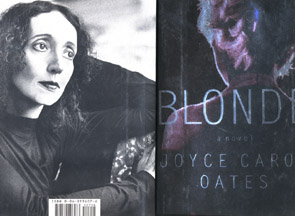 Gemini novelist Joyce Carol Oates announced Marilyn as her alter-ego or secret twin in the jacket art of her novel BLONDE, which had the working title of GEMINI, and is full of reflections on Gemini, including an extended fantasy of a sexual relationship between Monroe and a pair of handsome twins. A powerful chapter treats the occasion on which Monroe sang Happy Birthday to JFK. Years later tragic history repeated itself as farce when Gemini opera singer Beverly Sills sang Happy Birthday to Gemini Henry Kissinger.
Gemini novelist Joyce Carol Oates announced Marilyn as her alter-ego or secret twin in the jacket art of her novel BLONDE, which had the working title of GEMINI, and is full of reflections on Gemini, including an extended fantasy of a sexual relationship between Monroe and a pair of handsome twins. A powerful chapter treats the occasion on which Monroe sang Happy Birthday to JFK. Years later tragic history repeated itself as farce when Gemini opera singer Beverly Sills sang Happy Birthday to Gemini Henry Kissinger.
 (found stereogram)
(found stereogram)
 (photo by Milton H. Greene)
(photo by Milton H. Greene)
reading Ulysses
 Saturday, October 10, 2009 at 04:24PM
Saturday, October 10, 2009 at 04:24PM 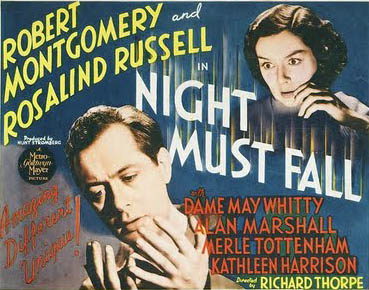
Something a little silly perhaps, arbitrary and unchronological, entirely consequent on the vagaries of TurnerClassicMovies programming. This goes back to Gemini, the Hands, and the Taurus cusp. Remember wonderful Robert Montgomery? Born exactly on the cusp of Taurus and Gemini (Sun was at 29d30’ Taurus at noon on his time-unknown birthday), this is arguably his best film. On the poster his dense, puzzled face contemplates his murderous digits, detached, vaguely disturbed, with a glimmer of dawning understanding and horror. What a perfect summary of the relationship of safe, premental Taurean fixity to the adjacent restlessness and dangerous manipulations of Gemini. As Montgomery’s Mars is conjunct the Sun at 2 Gemini, the fingers particularly signify violence, rather than, say, intelligence, or creativity. Interestingly, co-star Rosalind Russell is also a Gemini, and her hand is also expressively emphasized in the poster art. Russell ends the film with a line that is bizarre, but aptly Geminian: “You not only saved my life, you saved my reason!”
The great, and now rather unfashionable, novelist Thomas Mann, an exemplary Gemini, noted in his diary on April 14, 1937: ". . . Night Must Fall, an excellent film with Robert Montgomery, who represents a good psychological type and has distinctly Joseph-like moments. Quite interested." Since Joseph was Mann's deeply felt alter-ego, with whom he shared his own horoscopic placements in his massive novel, Joseph and His Brothers, this response to Montgomery's character, a silver-tongued, criminal charmer, is clearly a bit of astrological self-recognition.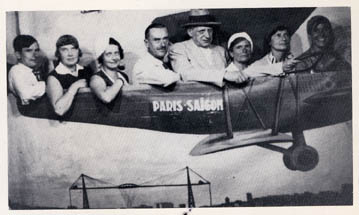 Thomas Mann and friends
Thomas Mann and friends
Incidentally, the third co-star of this film, Dame May Whitty, was also a Gemini, and what a Geminian name. While I'm drivelling on, to make another mad point, the late great Beatrice Lillie (aka Lady Peel) was a Gemini (and in talking of Gemini, do enjoy finding double letters in the name) and the Gemini poet Theodore Roethke (b. May 25, 1908) was once compelled to pen these immortal lines:
Bees and lilies there were,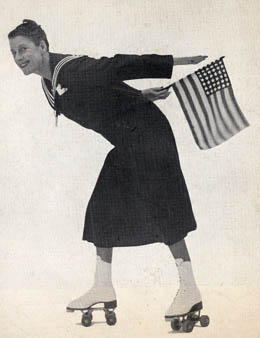
Bees and lilies there were,
Either to other,--
Which would you rather?
Bees and lilies were there.
 Friday, June 13, 2014 at 11:43AM
Friday, June 13, 2014 at 11:43AM Updating Hands of Gemini
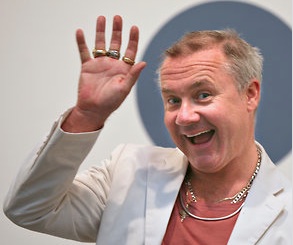 Damien Hirst -- his signature camera pose (7June65)
Damien Hirst -- his signature camera pose (7June65)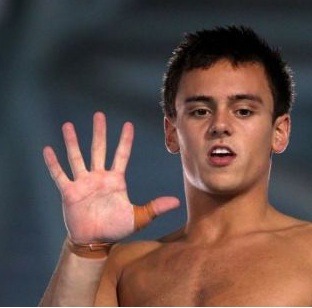
Tom Daley (21May94)
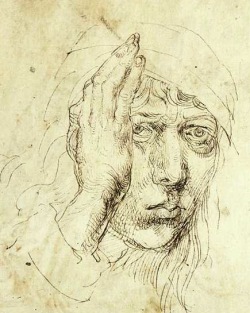

Durer: May 21, 1471
a self-portrait and his
iconic praying hands.
more Durer hands below
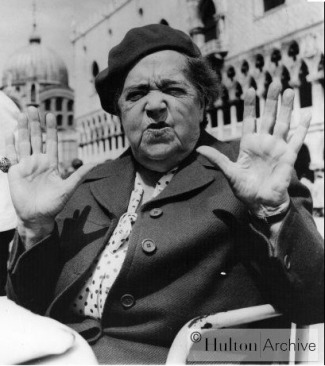
Elsa Maxwell (24May1883)
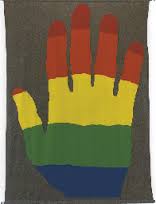
Jim Dine (16June1935) 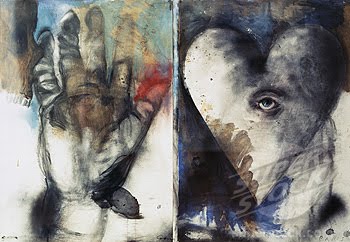
Jim Dine diptych

Boyfriends and Instagram buddies:
Andy Cohen (2June68) & Anderson Cooper (3June67)

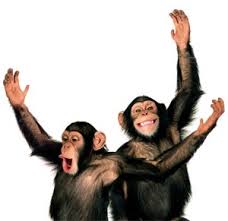
Continued at Hands of Gemini
 Thursday, October 16, 2014 at 09:47PM
Thursday, October 16, 2014 at 09:47PM 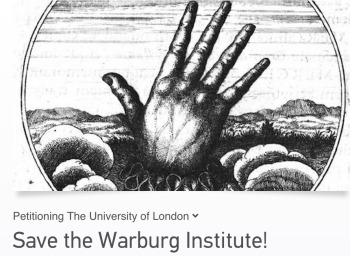
The great bibliomane and iconologist Aby Warburg was born on June 13, 1866, under Gemini, sign of the Twins. Scion of a wealthy family of German Jewish bankers, he ‘famously made a deal with his brother Max to forfeit his right, as the eldest son, to take over the family firm, in return for an undertaking on Max’s part to provide him with all the books he ever needed’. His brother Max was precisely one year younger, also born on June 13, thus also a Gemini, as if a twin displaced by one yearly cycle. Warburg’s great accomplishment, the creation of the Warburg Institute (now threatened) was achieved in spite of psychological disabilities including an often incapacitating dread of astrological coincidences, which he believed pursued him as he himself pursued the scholarly study of the persistent life of classical imagery. To this day the staff of the Warburg repels approaches from practicing astrologers. Perhaps the Institute would be in better shape if it participated in the reality of ancient imagery rather than sequestering it in musty antiquarianism. The campaign to save the Warburg Institute has adopted as its emblem one of the most popular images in the collection, a hand apparently engulfed in dire circumstances, waving for help, bearing the letter W in its sinews. In the classic melathesia of Zodiac to parts of the body, the Hands are of course the Twin’s. More Geminian Hands are here:http://astrodreamer.squarespace.com/blog/category/hands-of-gemini
 Saturday, October 18, 2014 at 06:10PM
Saturday, October 18, 2014 at 06:10PM 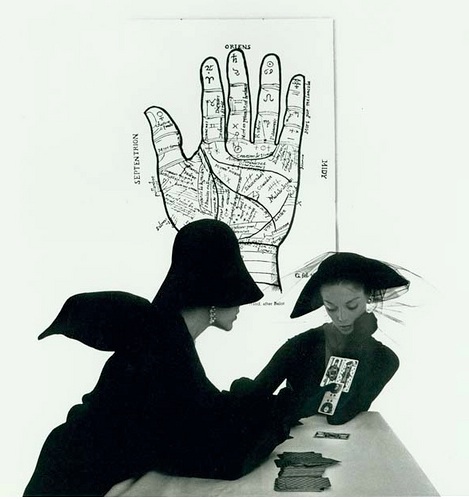 Photographer Irving Penn (June 16, 1917)
Photographer Irving Penn (June 16, 1917)
Two women with tarot cards and hand-reading chart.
One of them was his wife, model Lisa Fonssagrives.
